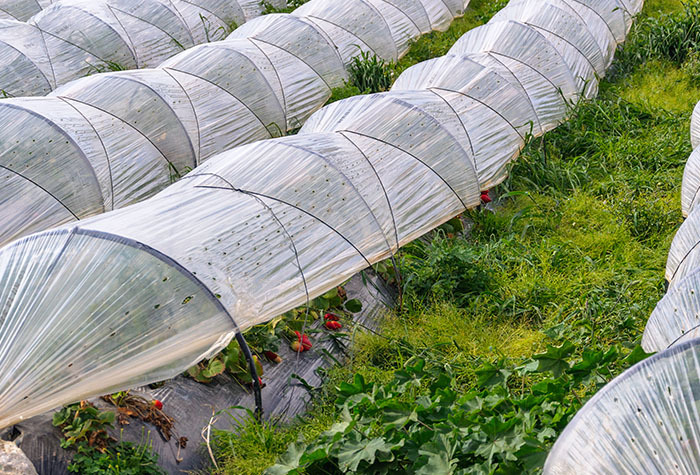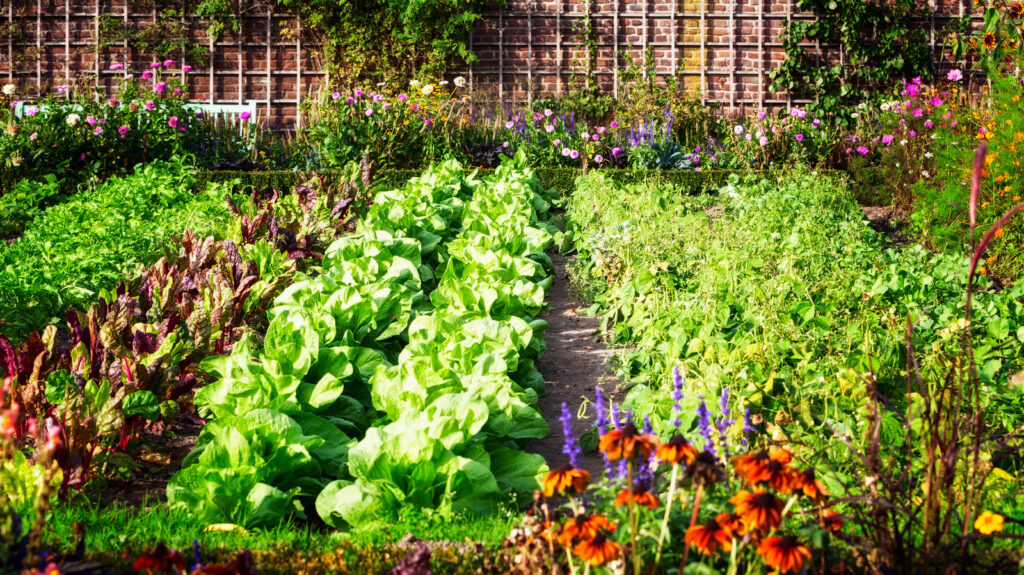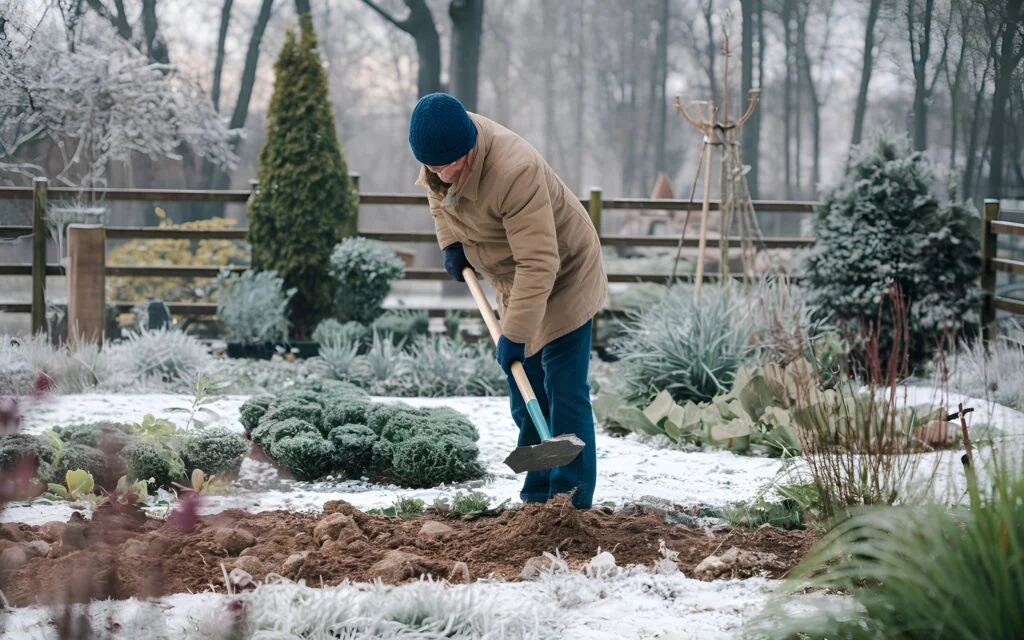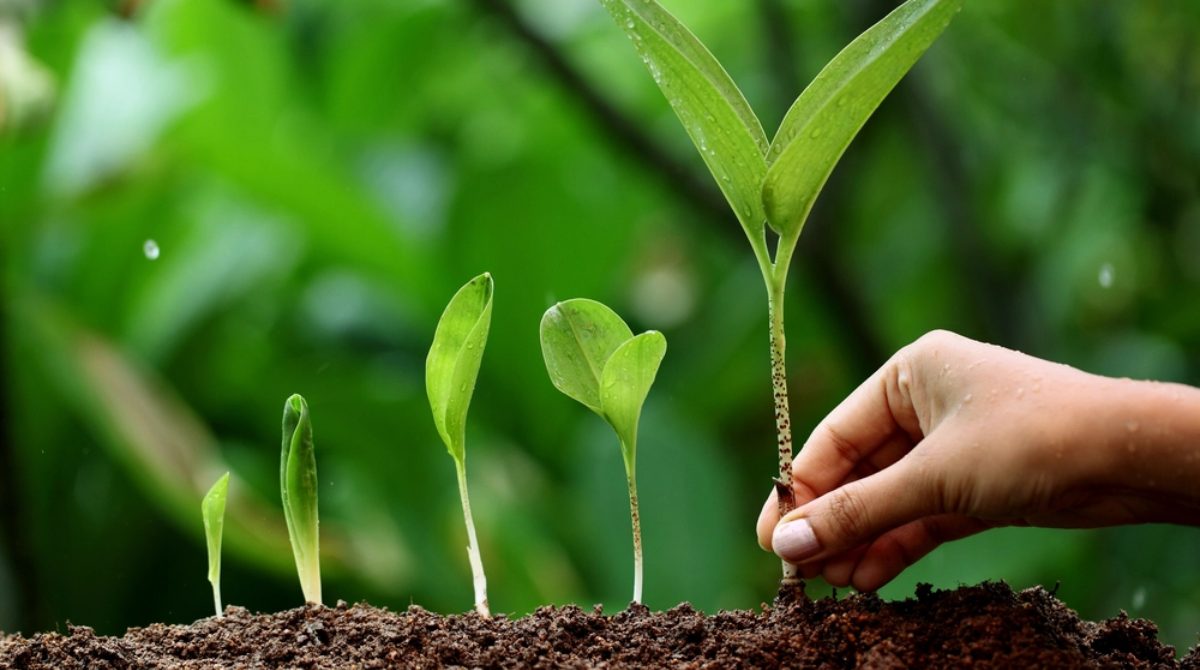Winter doesn’t mean your garden has to go dormant. winter gardening tips, With a little preparation and creativity, you can keep your garden thriving even in the coldest months. This guide offers practical tips for winter gardening, especially for those dealing with snowy regions. From protecting your plants to choosing the right tools, we’ll cover everything you need to maintain a vibrant garden all season long.
Preparing Your Garden for Winter

Table of Contents
Proper preparation is the foundation of winter gardening success. Follow these steps to get your garden ready for the cold:
- Clean and Organize: Remove dead plants, weeds, and debris from your garden beds. This reduces the risk of pests and diseases overwintering in your garden.
- Protect Your Soil: Apply a thick layer of mulch to insulate the soil. Mulch prevents temperature fluctuations and retains moisture, creating a stable environment for your plants.
- Add Compost: Enrich your soil with compost before the ground freezes. This provides nutrients that will break down slowly over winter, preparing your garden for spring planting.
- Cover Beds: Use fabric row covers or plastic sheets to protect your soil and plants from frost and snow. These covers are particularly beneficial in snowy regions where heavy precipitation can damage exposed soil.
Choosing Winter-Friendly Plants
Not all plants are created equal when it comes to withstanding winter conditions. Selecting the right varieties ensures your garden remains productive even in the frostiest months.
- Hardy Vegetables and Greens: Kale, spinach, Brussels sprouts, and carrots thrive in cold weather. Their natural resilience allows them to grow despite freezing temperatures.
- Perennial Herbs: Thyme, rosemary, and sage are excellent choices for winter gardening. Plant them in containers for easy relocation to sheltered areas during extreme cold.
- Ornamental Plants: Evergreen shrubs and winter-blooming flowers like pansies and hellebores add beauty to your garden while withstanding harsh conditions.
Tip for Snowy Regions: Opt for plants known for their ability to survive heavy snowfall, such as Siberian irises and snowdrops. These plants not only resist the cold but also add color to your winter garden.
Protecting Your Garden from Extreme Weather

Winter weather can be unpredictable, but you can safeguard your garden with a few proactive measures:
- Frost Protection: Use frost blankets or garden fleece to shield your plants during overnight temperature drops. These materials are lightweight and reusable.
- Snow Insulation: While snow can act as an insulator for certain plants, excessive snow buildup can cause damage. Gently brush off heavy snow from shrubs and trees to prevent branches from breaking.
- Wind Barriers: Erect windbreaks using burlap screens or wooden panels to protect delicate plants from harsh winter winds.
- Irrigation Management: Water your garden during dry spells, as plants can still suffer from dehydration in winter. Ensure the soil is moist but not waterlogged to prevent root rot.
Essential Winter Gardening Tools and Equipment
Having the right tools makes winter gardening more efficient and enjoyable. Here are some must-haves:
- Cold-Weather Gloves: Insulated gloves keep your hands warm while working in freezing conditions.
- Sturdy Shovel: A durable shovel is essential for clearing snow and digging in frosty soil.
- Frost Blankets and Row Covers: These are indispensable for protecting plants from frost and snow.
- Snow-Friendly Equipment: For gardeners in snowy regions, a snow blower or snow rake is invaluable for keeping paths clear and preventing snow damage to plants.
Tool Maintenance Tip: Clean and dry all tools after use to prevent rust. Store them in a dry, sheltered area to ensure they’re ready for the next season.
Tips for Maintaining a Thriving Garden All Winter

Winter gardening requires ongoing care, but the rewards are well worth the effort. Here’s how to keep your garden thriving throughout the season:
- Regular Inspections: Check your plants and soil frequently for signs of stress, such as frost damage or dehydration.
- Fertilization: Use slow-release fertilizers to provide nutrients over time. Organic options like bone meal and fish emulsion are excellent choices for winter feeding.
- Pest Control: Watch for overwintering pests and take action immediately to prevent infestations.
- Indoor Gardening: If outdoor gardening is limited by extreme weather, consider growing herbs and leafy greens indoors. Use grow lights to simulate sunlight and create a productive indoor garden.
FAQs About Winter Gardening Tips
1. Can I grow vegetables during the winter season?
Yes, you can grow hardy vegetables like kale, spinach, carrots, and Brussels sprouts during winter. These vegetables thrive in cold weather and are ideal for winter gardening.
2. How can I protect my garden from frost?
To protect your garden from frost, use frost blankets, garden fleece, or cloches to cover your plants. Mulching around the base of plants also helps insulate the soil and maintain consistent temperatures.
3. What are the best plants for winter gardening in snowy regions?
For snowy regions, consider planting Siberian irises, snowdrops, and evergreen shrubs. Hardy vegetables like cabbage and winter-blooming flowers such as pansies also perform well in snowy climates.
4. Do I need to water my garden in winter?
Yes, watering is essential, especially during dry spells. However, water sparingly and only when the soil is dry, as overwatering can lead to root rot in colder temperatures.
5. How can I keep my garden soil healthy in winter?
Add compost or organic matter to enrich the soil before the ground freezes. Use mulch to protect the soil from temperature fluctuations and to retain moisture.
6. What tools are essential for winter gardening?
Key tools include insulated gloves, a sturdy shovel, frost blankets, and row covers. For snowy regions, a snow rake or blower is helpful to manage snow buildup.
7. Can I start an indoor garden in winter?
Absolutely! Indoor gardening is a great option for winter. Use grow lights to cultivate herbs, microgreens, and leafy vegetables indoors. Choose a sunny windowsill or invest in an indoor gardening kit.
8. How can I protect my plants from heavy snowfall?
Gently brush off excess snow from branches to prevent breakage. Use protective coverings like burlap or create structures to shield plants from heavy snow.
9. Should I fertilize my plants during winter?
Yes, but use slow-release fertilizers or organic options like bone meal. Avoid over-fertilizing, as plants grow slower in winter and require fewer nutrients.
10. Are there winter gardening options for small spaces?
Yes, container gardening is an excellent option for small spaces. You can grow herbs, leafy greens, or even dwarf vegetables in pots, which can be moved to sheltered areas during extreme weather.
11. How do I prevent pests in my winter garden?
Inspect plants regularly for overwintering pests. Remove dead leaves and debris where pests may hide, and use organic pest control methods like neem oil if needed.
12. Can I compost during winter?
Yes, you can continue composting during winter. Keep your compost pile insulated with straw or leaves to maintain microbial activity and ensure decomposition continues.
Conclusion
Winter gardening doesn’t have to be a dormant period. With the right preparation, plant selection, and ongoing care, your garden can remain a vibrant and productive space even in the coldest months. Embrace the beauty and challenge of winter gardening, and enjoy the rewards of a thriving garden all year round.
For more gardening tips and resources, visit GardenLoom. Stay inspired and keep your green thumb active through every season!








